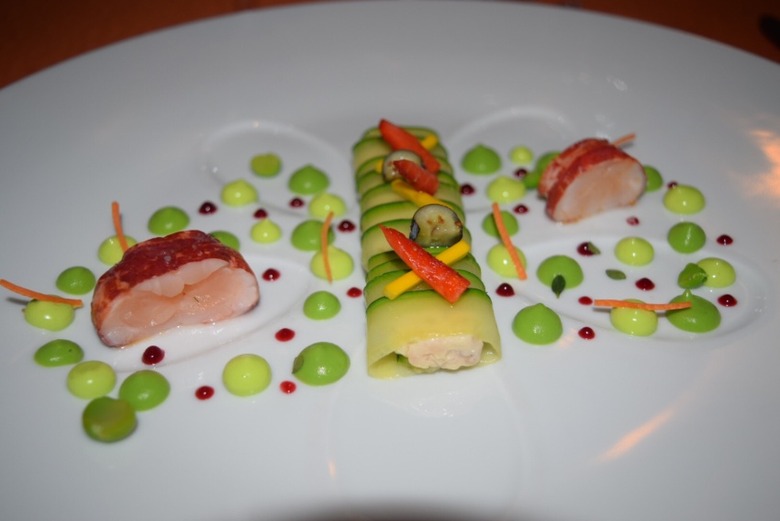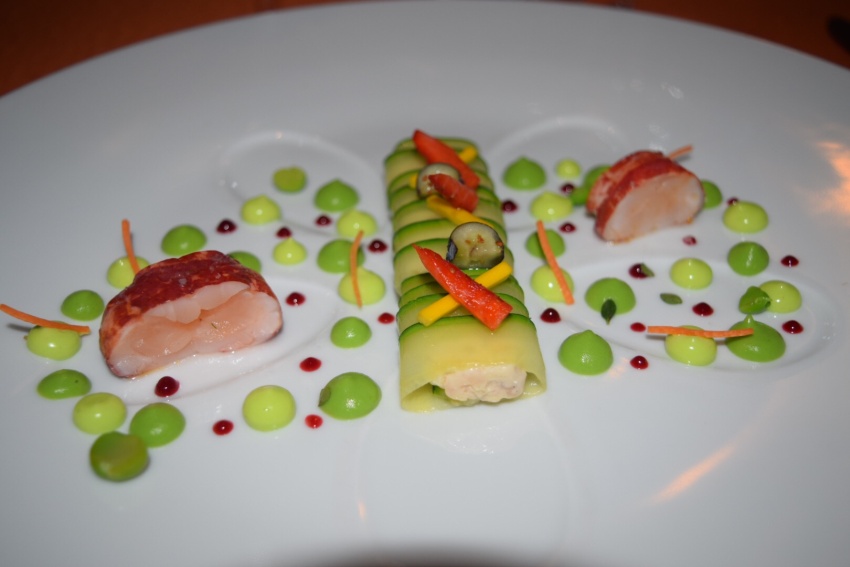Chef Didier De Courten Provides The Dining Experience Of A Lifetime In Sierre
Sierre is a lovely little Swiss town located between German Haut-Valais and French Bas-Valais. On average, it enjoys 300 days of sun every year, thus deserving the title, "The Town of Sunshine." Sierre is the home of many of the country's best wines, cheese, and a variety of produce. You will also find hometown chef Didier de Courten and his two-Michelin-star namesake restaurant just a short walk from the train station. We made the journey to meet this world-class chef firsthand.
To be honest, we really didn't know what to expect. Taking our seats in the lounge of Restaurant Didier de Courten, we waited with great anticipation to have the opportunity to meet this legendary Swiss chef.
"To live is to cook, and to cook is to live," stated chef Didier de Courten as our eyes met for the first time. After joining us at our table, we began with what would become and very enlightening conversation.
The Daily Meal: Switzerland is a very special country. Why did you choose the town of Sierre to be the home of your restaurant?
Chef Didier de Courten: I was born in Sierre; this is my home. I was taught by many fine French chefs, but I chose to come home and open my restaurant here.
What was your first culinary connection that sparked your interest in cooking?
My grandparents were farmers. My mother is a very good cook. I got my inspiration from them at a very young age.
Do you see this as chance to promote more awareness of eating fresher, locally-produced food?
Being a two-Michelin-Star [restaurant], we get many international guests, as you can imagine, [so] it's really important for me to work with local products. I want to show my international guests what is available right here.
Chef Didier de Courten uses Val d'Anniviers ham, cured bacon, and cheese from mountain pastures that bring a true local feel to the menu. He also has a real connection to the land and its history. Saffron is one of Valais' most mythical products; it was common in the Middle Ages and its production still takes place today at Mund, Venthône, Sion, and Martigny.
Interestingly, de Courten is directly linked historically to the production of Valaisan saffron. On 30 June 1647, Suzanne de Courten sold a saffron production site at Anchette to Jean-Antoine de Preux. The property sellers could not have imagined that 350 years later their descendants would share the same passion for wonderful spices. In fact, in the autumn, Didier de Courten scents his dishes with saffron picked from the de Preux plot.
The Daily Meal: Besides your knives, what are some of your favorite kitchen tools to use?
Chef Didier de Courten: Nowadays it's not just about working [with tools]. A good chef has to be smart. It's not just my hands or my knife, it's my brain.
That brings up a good question. I noticed on your Facebook page that you have art and drawings of your dishes. Are you conceptualizing the dishes on paper and then creating them on the plate?
It is art and conceptualization. It takes a week's work to put on paper what I want to do. It is a tool to show the team how this dish is to be created and how the presentation will be.
When you are at home and not working in your restaurant, what do you like to prepare for yourself and your family?
My wife is from Italy and she is a very good cook. When I am at home, she cooks. I also want to add that gastronomy is not just about Michelin-starred food, like here. It's about preparing dishes you enjoy and working on perfecting them.
If you could dine with anyone and you don't have to cook, who would they be?
The first person would be my mentor Monsieur Gérard Rabaey. Many musicians visit my restaurant. I would of course invite them. I'm athletic, I love to run. There would be a few athletes at the table as well.
What trends do you see in the culinary world that are new and upcoming?
Using local products — fruit and vegetables from the region. People like to recognize and understand what is on their plate and what the chef is trying to do.
What advice would you give to a culinary student or aspiring chef that is thinking about attending culinary school?
My first advice is to not go too fast. Go step by step starting with the basics. Be patient, learn, and learn [more]. The Michelin Guide is a good thing, but you must learn how to recognize and use the products correctly. A good chef should not be all around the restaurant, but should stay in the kitchen and work. Don't watch TV. Stay in the kitchen, learn, and obtain knowledge. A new chef should be careful of journalists. Some wish to make stars of the chefs, and I feel the chef should be in the kitchen and not on TV.
When a chef like Didier de Courten asks if we would like him to cook for us, the answer is unequivocally: "Oui, chef! Merci beaucoup!" Escorted to our table, we settled in for an evening of fantastic food, great Swiss wine, and inspiring conversation.
While conversing with chef Didier de Courten, we were taught that food is the memory of taste, the ingredients provide memory of the earth, and the cooking itself is the chemistry between man's work and nature. He is certainly not afraid to think outside of the box. In fact, he thrives at doing so. "In a culinary world where everyone is in perpetual pursuit of something extraordinary and everything has become possible, I want to keep my freedom of creation as well as above all respecting ingredients," he said. "Creating a dish is realizing a fantasy, pursuing intentions and desires... monotony is the ruin of me."
We could not agree more.
For more information on chef Didier de Courten, click here.

